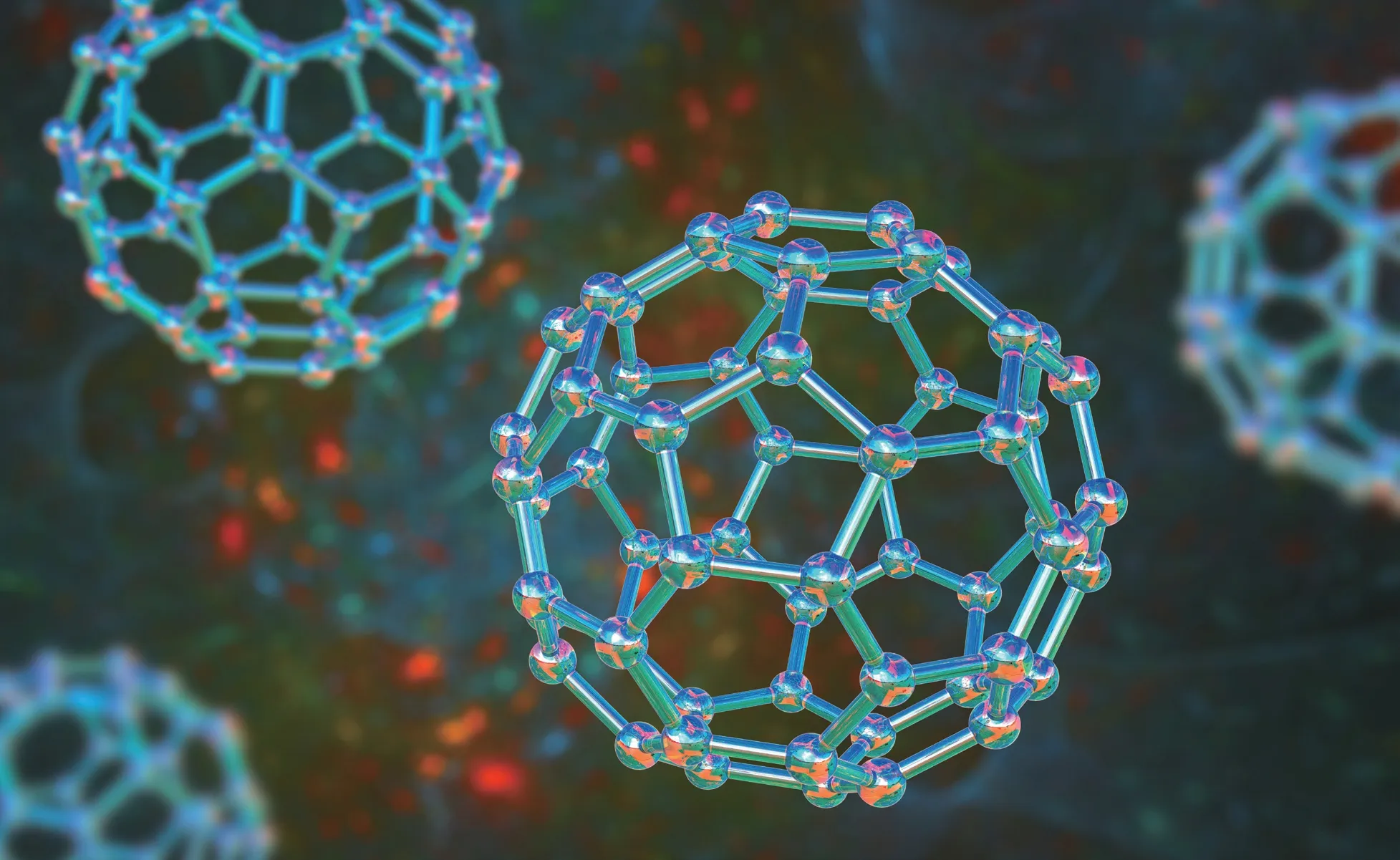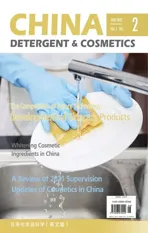The Development of Fullerenes in Cosmetics from Domestic and Worldwide Patent Data
2022-07-14GuLingjunShangJingjingLiGuoqingYuHongmei
Gu Lingjun,Shang Jingjing,Li Guoqing,Yu Hongmei
Chinese Academy of Inspection and Quarantine,Cosmetic Tech Center,China
Tian Wenhuai
University of Science and Technology Beijing,School of Materials Science and Engineering,China
Abstract Fullerene is an excellent anti-aging raw material for cosmetic industry,which has strong free radical scavenging ability.Current work on fullerene has been mostly focused on its applications and properties,but there are few studies on the patents regarding its application in cosmetics.Herein,the development of fullerene in its application in cosmetics was analyzed by searching the patents regarding fullerene in cosmetic industry in the databases from China National Intellectual Property Administration and European Patent Office.The main technical fields of patents,the applicants and inventors,the publication date and the region were analyzed.Data comparison was also conducted according to above aspects at home and abroad.It was found that fullerene-containing cosmetics in China was generally consistent with the world level.China started a little later than other countries in terms of time;there are quality problems worldwide,e.g.,the lack of technical innovation.Most patents mainly related to appearance or packaging.As the second largest patent applicant country for fullerene-containing cosmetics in the world,China obviously has leading advantage in terms of quantity.Among the applicant regions being considered,fullerene industry giants such as Japanese Mitsubishi are the main ones.Due to the late start of domestic enterprises,there is still a big gap with the world’s leading groups.However,in cosmetics industry,it can be said that domestic enterprises have taken the initiative when contrasted with traditional overseas brands.
Key words development of fullerene;patent;cosmetics
1 Development and Patent status of Fullerenes in China
1.1 History of Fullerenes
In 1985,Harold in UK and Richard·Smalley in US.produced C60spherical molecules by hitting graphite with high-powered laser under laboratory conditions,which verified the chemical conjectures on spherical structure of fullerenes,and shared the 1996 Nobel Prize in chemistry with Robert in US.for this discovery.Smalley and his team named the new substance Bachamt-fullerene[1],“Bucky ball” or“fullerene[1]” for short to commemorates honor of the domed structure pioneered by architect Buckminster Fuller.The 1967 USA Pavilion at the World’s Fair——The Montreal Biosphere,which known as Fuller's masterpiece,was shaped like spherical geometric ball and stick model that similar to fullerenes.
Because of the unique structure of fullerenes,physicists,material scientists and chemists generate great interests in the research and application of fullerenes and their derivatives.But only a few thousand fullerenes can be obtained using lasers method,the small amount cannot support for further research.In 1990,Kreissimer in Germany obtained 100 mg fullerene[2]by arc method,which greatly met the scientific research needs of scientists.In 1991,Howard et al.from MIT obtained pure fullerenes by benzene combustion method and confirmed its structure as soccerene[3]by liquid chromatography,mass spectrometry,ultraviolet spectroscopy and other means.With the development of fullerenes’ preparation methods,it is possible for scientists to further study the properties of fullerenes.In 1993,Long.YC et al.reported the strong free radical scavenging ability of some water-soluble free radicals[4].

Figure.1 3D ball and stick structure of C60 Fullerene molecule(left) and the Montreal biosphere designed by Fuller(right)
1.2 Structure and physicochemical properties of Fullerenes
Fullerene is an allotrope of carbon.The 3D structure is a centrosymmetric hollow sphere or ellipsoid molecule composed entirely of carbon element.The chemical formula is usually expressed as C60and C70.Its structure is similar to that of mono-layer graphene,except that graphene has only hexatomic rings of carbon,while fullerene C60contains 20 hexatomic carbon rings and 12 five-membered carbon rings,which leads its overall structure is stable,neither soluble in water nor in oil[5,6].The poor solubility of fullerene derivatives is the main reason for their few application so far,but some derivatives found in current studies have made great progress in the application of solubility.[7,8]At the same time,fullerene derivatives have a certain superconducting properties,doped fullerenes metal is so far found that the critical temperature of the highest superconducting material.[9]Fullerenes also have nonlinear optical properties and electromagnetism[10].
The spherical structure of fullerenes results in their more stable chemical properties but still reactivity.Each carbon atom in fullerene is bonded to each other with non-standard sp2 hybrid orbitals,and the remaining p orbitals form spherical bonds with each other distributed around the outer shell and inner cavity of the spherical molecule[11].Fullerene can from addition reaction,hydrogenation reaction and polymerization reaction,among which electrophilic substitution reaction with metal is more widely used[9].
1.3 Current domestic patent status of fullerene
As a new material in the 21 century,fullerene has unique structure and many derivatives involved in a wide range of applications.In terms of patent applications,over 8,000 patent data searched from the China National Intellectual Property Administration with keyword “fullerenes”.Fullerenes have nearly 5,000 patents as nanomaterials,more than 3,200 patents as semiconductor electronic materials,and more than 3,000 patents as biomedical materials[12].
Research patent data can reflect a country’s research innovation ability in this field from the side.In 2002,Stern and Porter et al.in the United States established an evaluation model to predict the growth of national innovation capacity by using the empirical test of national patents.This model can be used to predict and explain the growth of national innovation[13].
Therefore,this paper uses the existing fullerenes patent information to analyze its development in the field of cosmetics.The results will provide guidance for the development and application of cosmetics containing fullerenes in the future.
2 Patent data on fullerene in cosmetics
2.1 Domestic patent status of fullerenes in cosmetics
According to the database of patent retrieval and analysis of China National Intellectual Property Administration,domestic patent applications of fullerene in cosmetics were analyzed.As of the June 2021,149 patents were obtained through a search of keywords “fullerenes AND cosmetics”.Among them,the total number of domestic patents is 146 with 142 invention applications,2 utility models and 2 appearance designs.The following 146 contents are analyzed from patent applicant,inventor,technology field (IPC main classification number),application and publication time,patent validity and other aspects.
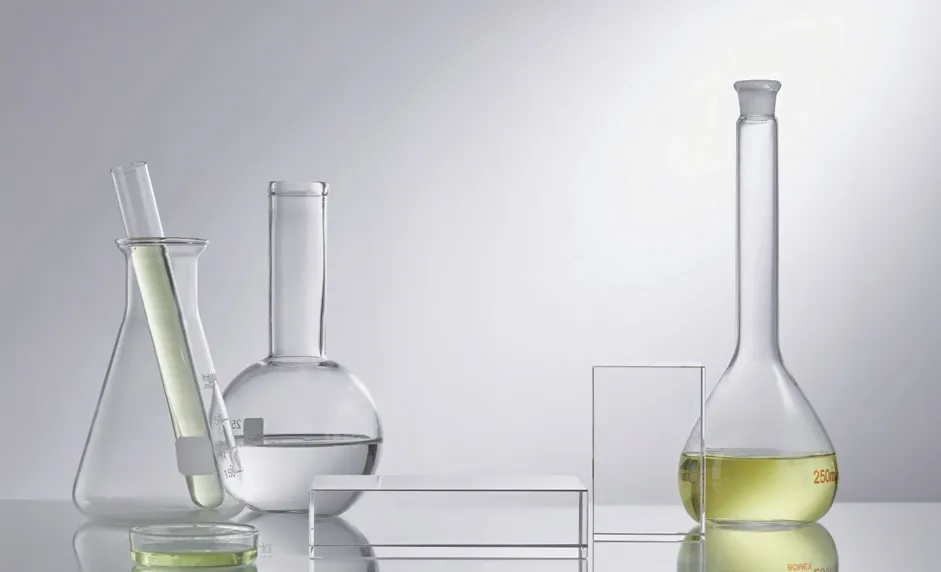
2.1.1 Patent applicant
According to the analysis of patent applicants,applicants are found relatively dispersed (Table1).The maximum number of patents held by applicants is 9,that accounting for 6.2% of the total and did not exceeding double digits .
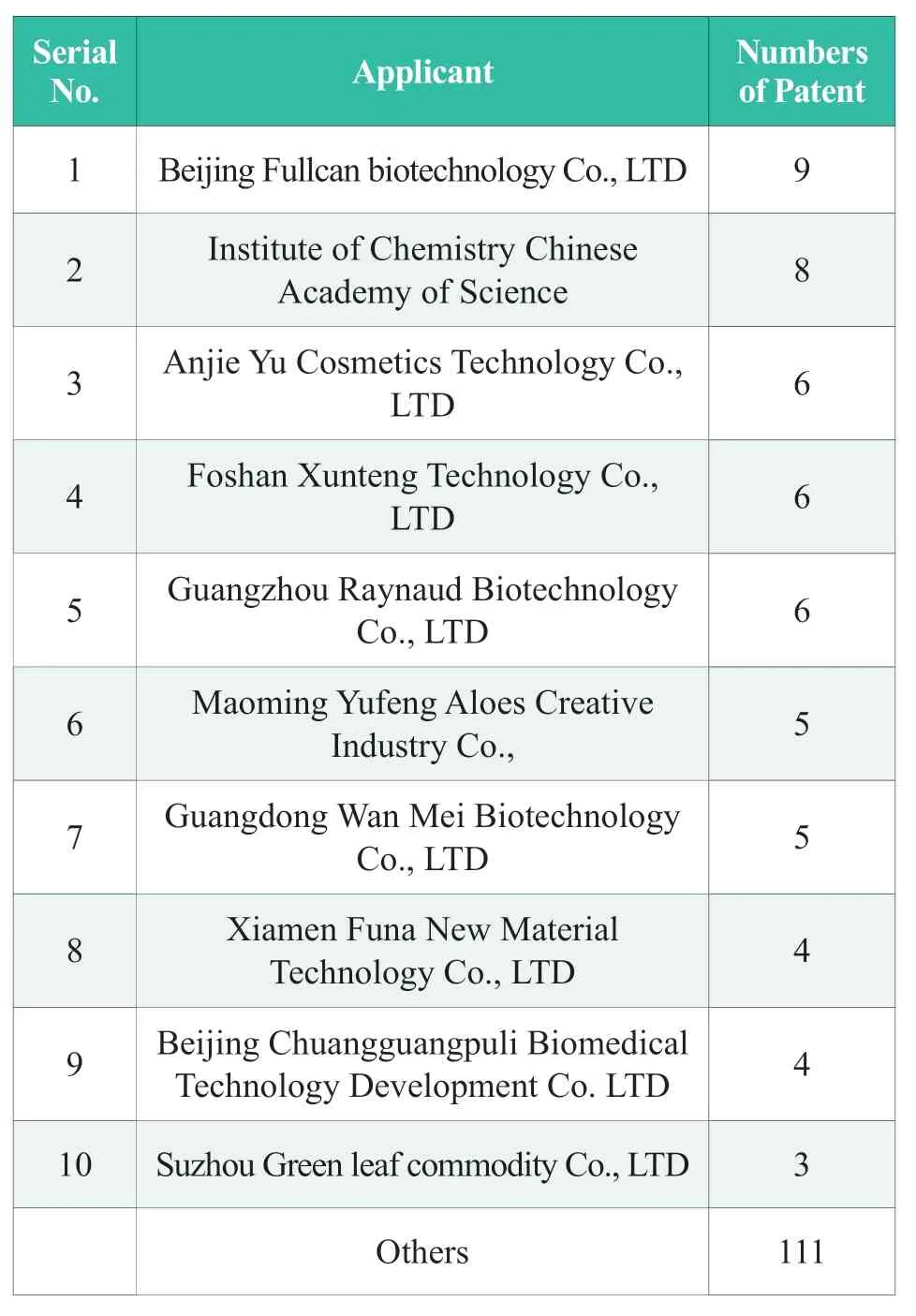
Table 1.TOP 10 applicants for the patents of fullerenecontaining cosmetics in China

2.1.2 Patent Inventor
Inventors were also found scatter distributed,with 412 inventors for 146 patent applications.Only two of them had more than 10 patents.The number of remaining inventor applications does not exceed double digits,as shown in Table 2.

Table 2.TOP 10 inventors for the patents of fullerenecontaining cosmetics in China
2.1.3 Technical field
In terms of the International Patent Classification Number,the top 10 technical fields in the main classification all belongs to A61,which is under section A-61 essential parts of human life-“Medical or veterinary medicine;Hygiene”.Since each patent classification can be assigned to multiple technical fields,there are multiple patent classifications.The 146 patent data involve 1,202 technical fields in total,among which the top 10 fields are shown in Table 3.As can be seen from the data in the table,most of the application fields focus on skin care preparations,and are mainly based on component characteristics,that is cosmetics formulations with different characteristics.The skin care preparations are mainly anti-aging preparations,which accords with the application value of fullerenes with high affinity to free radicals.

Table 3.TOP 10 main applied fields of the patents of fullerene-containing cosmetics in China
2.1.4 Application and Published time
As can be seen from the patent application numbers and publication time (Figure 2),the patent application and publication authorization time of domestic fullerene cosmetics are consistent on the overall trend.After 2018,it entered a period of explosive growth for three years and has continued to these days.Before 2018,the number of patent applications and disclosures for domestic fullerene cosmetics is no more than 10 per year.By 2018 the number of applications and open licenses had reached 40 and 20,increasing by more than four and three times respectively.In the following three years,the number of applications decreased while the number of public authorization kept increasing,indicating that there was a retardation time between public authorization
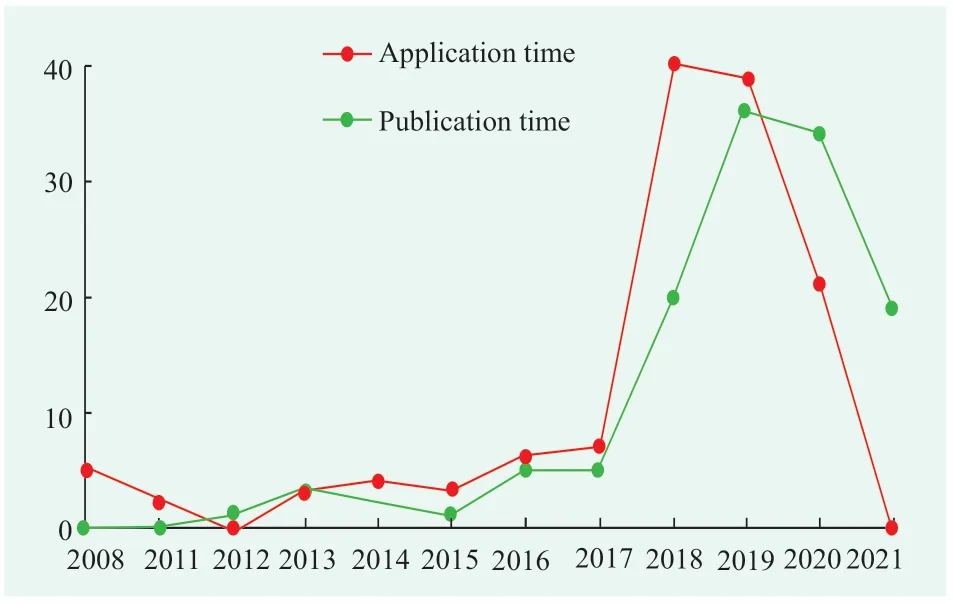
Figure 2.Plots of the quantity of patents vs.application date and publication date for domestic fullerene-containing cosmetics
2.1.5 Effective patent
Filtering 146 patent information,46 valid patents were obtained with a total efficiency of 32%.In the overall patent,29 were authorized and 117 were made publicized.The number of authorized announcements in valid patents is 26,and the number of published patents is 20.Drilling and retrieval of applicants with valid patent data found that only 4 applicants in Table 1 ranked in the top 10 in the number of valid patents,as shown in Figure 3.

Figure 3.Applicants and valid patents of domestic fullerenecontaining cosmetics
2.2 Worldwide Patent Status of Fullerene in cosmetics
According to the Espacenet patent database search engine of European Patent Office,worldwide fullerene patents in cosmetics were searched and analyzed.By June 2021,search citeria were set as [nftxt= “Fullerene” AND nftxt all “Cosmetics”],and the total of 1494 patent data were obtained.The following analysis were obtained in terms of disclosure country,applicant country,applicant/inventor,disclosure time trends,and technology sector (IPC main classification number) to obtain the following analysis.
2.2.1 Public area
Figure 4 was obtained according to the open countries and regions distribution.The sum of all results in this taxonomy is about 2,870,much higher than the retrieval results of 1,494 patent data.It is reasonable to infer that each patent has more than one open country or region,and many patents applied for patent protection in multiple countries or intellectual property organizations.
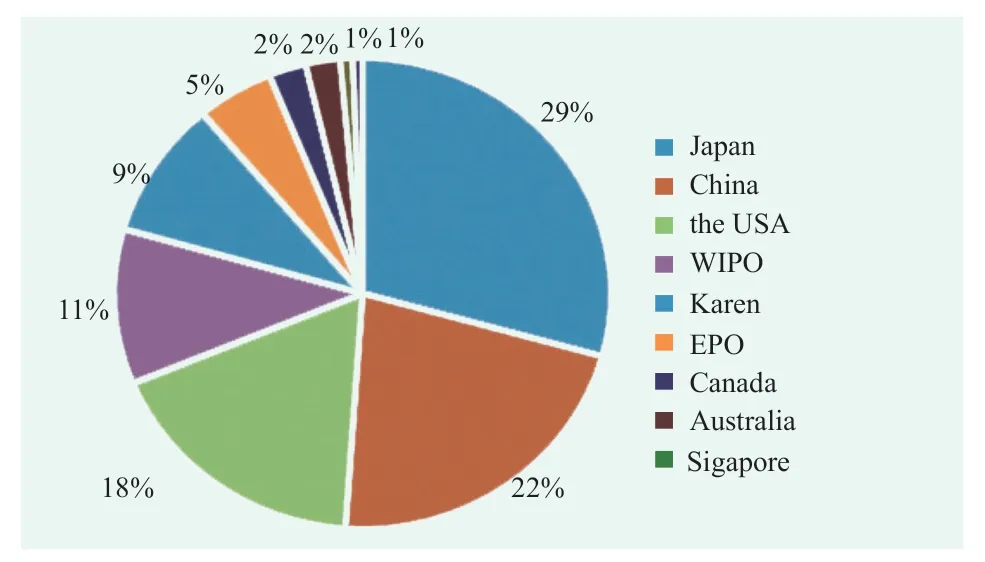
Figure 4.International distribution of fullerene-related patents in cosmetic fields from the European Patent Office database Espacenet
As shown in the following figure,China,Japan,South Korea and the United States are the four main patent applications countries for fullerene cosmetics,accounting for more than 75% of the total patent application data.There are also many public patents filed through WIPO,accounting for about 11%.Other countries filed fewer patents,no more than 5% in each.The technical sources of international cosmetics patents are consistent with the trend of fullerene cosmetics patents,while China is the second largest patent source country in the world[14].
2.2.2 The applicant’s country or region
Applicants are generally universities,research institutes,enterprises and public institutions.The ranking analysis of the countries where patent applicants reside shows the data in Figure 5.The sum of the results of this classification basically conforms to the retrieval results of 1,494.The top three patent applicants are the United States,Japan and South Korea,while China only ranks fifth that is lower than the number of cosmetics patents and fullerene cosmetics patent applications.And application patent numbers are only about a tenth of the number of TOP 1.

Figure 5.Distribution of the applicant’s country of origin
2.2.3 Applicant/Inventor
The retrieval results were classified and ranked according to applicants and inventors,and the most relevant cosmetics companies were screened out.The specific ranking was shown in Table 4 below.The top ten companies related to fullerene cosmetics are counted in the table.Among them,6 companies including the first belong to Japan,and the total number of patents of the 6 companies is 146.It can be said that Japan occupies a monopoly position in the application field of fullerene cosmetics.China has only one company which ranked 7th.

Table 4.International ranking of applicants in the fields of fullerene-containing cosmetics
According to the ranking of Chinese companies and inventors in the world,we can have an overall understanding of the patent level of fullerene cosmetics products in China.Therefore,the ranking analysis of inventors is obtained in Table 5.Seven of the top 10 list are Japanese inventors with 165 patents.Meanwhile,China has only two inventors on the list.The two Chinese inventors on the list belong to companies with a high number of patents.It is worth noting that the two inventors were only ranked third and fourth in China National Intellectual Property Administration,which did not match the first and second places from The European Patent Office database.At the same time,the number of fullerene cosmetics patents found in the European Patent Office is much higher than the data found in China National Intellectual Property Office.Further check the data of national office shows that the effective patents are consistent with the results of the European Office.It can be explained that the retrieval method of the national bureau website needs to be improved and refined.
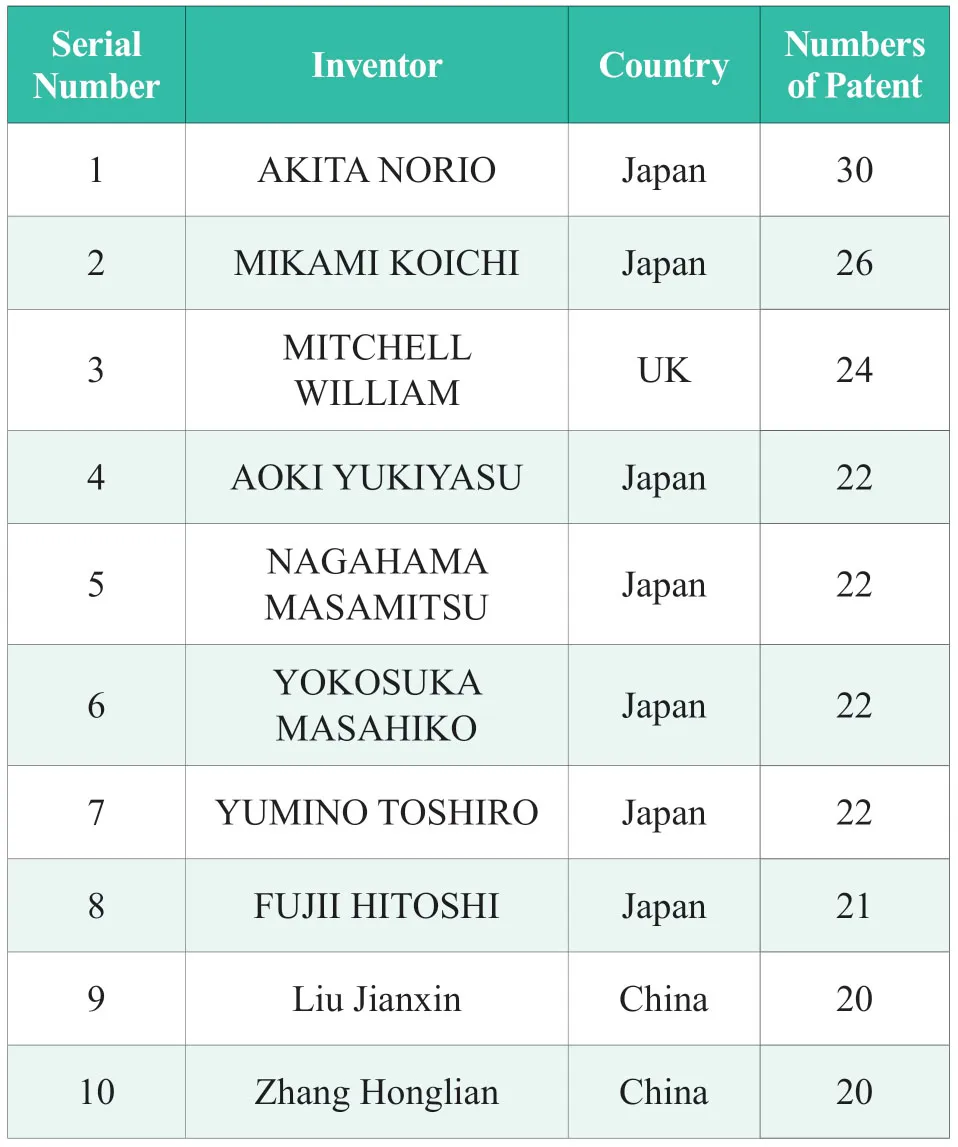
Table 5.International ranking of inventors in the fields of fullerene-containing cosmetics
2.2.4 Disclosure time
Figure 6 can be obtained by analyzing the retrieval results according to the disclosure time.The red curvilinear axis represents the annual disclosure amount of fullerene cosmetics.The black curve and the coordinate axes represent the cumulative number of historical disclosures by year.As can be seen from the figure,inspired by the Nobel Prize in Chemistry awarded to the discoverer of fullerene in 1996,the number of published patents for fullerene cosmetics started to increase around 2001 then reached to a peak after four years,with the number of patents increasing by more than 100 per year for six consecutive years.Subsequently,the number of applications kept increasing by more than 100 every year,and reached 200 for the first time in 2016.As can be seen from the above,the number of domestic fullerene cosmetics began to break through double digits in 2017,accounting for nearly one-fifth of the world’s total,which is consistent with the statistical results from the European Patent Office.It can be judged that the application of fullerene in cosmetics is in the stage of rapid development in its life cycle,and a lot of scientific research efforts are needed.
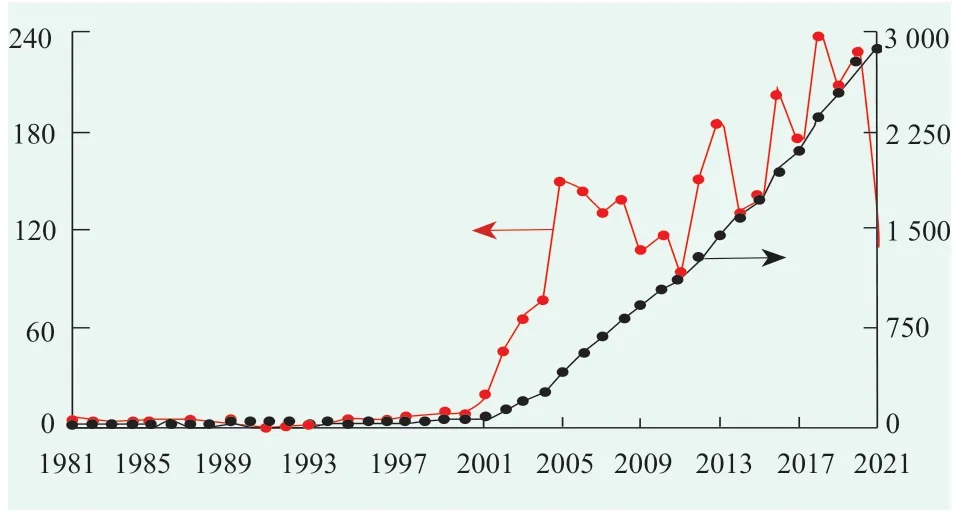
Figure 6.Date distribution curves of fullerene patents in cosmetic fields from Espacenet
3 Use Patent data to analyze the development of fullerene in the field of cosmetics
3.1 Analysis of fullerene cosmetics in China
According to the patent data of fullerene cosmetics of the National Intellectual Property Office,the following conclusions can be drawn.First of all,in terms of the number of patents,there are only about 1,500 patents in the cosmetic field,which is less than half of that in other applied fields who has 3,000 or 5,000 patents in general.The number of patents has not reached half of the applications in other fields,which shows great development potential[14].At the same time,the number of patent applications for fullerenes in cosmetics began to increase exponentially in 2017,lagging behind other advanced countries in the world.The total amount of all valid patents in China is only about the same as the global total in 2001.Third,the efficiency and authorization rate of domestic patents is relatively low,which indicates that the overall quality of patents needs to be improved,and few application of fullerene in cosmetics which needs to be vigorously developed.Fourthly,it can be seen from the situation of patent inventors and applicants that China’s fullerene cosmetics R&D team has two main teams,other r&d groups are evenly distributed.
It should be taken into account that the logical problem of CNIPA’s retrieval system,namely the number of search keywords in each title and abstract,may not be completely accurate.Therefore,fullerene in actual use is less than retrieved of domestic fullerene.At the same time,compared with other common cosmetic efficacy ingredients such as the search of“sodium hyaluronate AND cosmetics” got 2,286 patents;retrieval of “ascorbic acid AND cosmetics”yielded 1,308 data;search on “nicotinamide AND Cosmetics” yielded 1,135 items of data.It can be seen that the number of application patents of fullerenes in cosmetics is only about one-tenth of commonly used efficacy ingredients,indicating that the application of fullerenes in cosmetics is still in the development stage which is far from the maturity stage.
3.2 Analysis of global fullerene cosmetics
According to the retrieval results of the European Patent Office,the following conclusions can be drawn.First,according to the analysis of 2.2.1 and 2.2.2 international fullerene cosmetics disclosure regions and applicants,it can be shown from the side that there is a certain gap between the number of effective patent applications in China and the actual number of patent applications,and the conversion rate of patent results is low.Secondly,based on the applicant/inventor situation,it can be seen that foreign enterprises such as Mitsubishi in Japan,Merck in Germany,Johnson &Johnson and Procter &Gamble in the United States apply for more patents in China to facilitate their patent protection and profit.But thanks to this,Chinese fullerene cosmetic patents account for about 22% of the global in total,which is the second major applicant country in the world.Application time as the second factor,that mentioned in 3.1,the application of domestic fullerene patents lags behind in the world.Since the preparation methods of fullerenes were developed in Japan,the United States and other technologically developed countries,patent applications for fullerenes began to increase gradually.However in China,patent applications for fullerenes in the cosmetics field were basically blank before the Wang Chungru &Fullcan team extended their achievement to the cosmetics field in 2017.Most of them focus on composition,manufacturing method and packaging design with the low content of technological innovation[12],and the patent quality and quantity are not optimistic.However,a further study of the international situation shows that the same problem exists in the main technical fields of fullerene cosmetics,which are dominated by compositions and manufacturing methods,and lack of patented applications such as extracts with high innovative content and absorptive capacity with strong research.
As can be seen from the disclosure time,due to the rapid development of the preparation method of fullerene around 1993 and the stimulation of the Nobel Prize for fullerene in 1996,the patent application of fullerene began to enter the rapid growth period around 2001,in line with the concept of technology life cycle development.The circumstances surrounding patent applications reveal the state of development or maturity of a new technology.If the number of patent applications increases rapidly,it can be inferred that many new theories or technologies are being invented,which means the field is in a stage of rapid development and may soon reach its research peak.If there is a gradual decline in the number of relatively useful patents,the technology may being replaced by a new technology thus entering a declining phase of its life cycle.According to 2.1.4 and 2.2.4,the patents of fullerenes in the field of cosmetics show an exponential growth trend while in a state of rapid development in the technological life cycle.
4 Conclusions and prospects
This paper research patent data from China National Intellectual Property Administration and the European Patent Office with the object of fullerene cosmetics,traced the fullerenes application in cosmetics,through the analysis of the number of patent,technology,the inventor/applicant and the disclosure time in our country,as well as domestic and international development situation of contrast.It is found that the research level of fullerene cosmetics in China is basically consistent with the international level,and even leads the world in terms of quantity.Most of them are applied by domestic scientists and companies rather than traditional European and American brands,indicating that local enterprises have taken the initiative in the application of fullerenes and their derivatives in the cosmetics industry.Fullerene has great potential in the field of cosmetics in China,thus we should continue to give full play to our expertise in this field and cultivate a group of fullerene professionals to promote the emergence of national advanced products and brands.
